Introduction
“One child, one teacher, one book, one pen can change the world.”
― Malala Yousafzai, I Am Malala: The Story of the Girl Who Stood Up for Education and Was Shot by the Taliban
Odds are good that we all have had at least one teacher who left a lasting impact on our lives. Perhaps that teacher greeted you with a smile each day that let you know everything would be OK, or helped you see the potential you hadn’t noticed in yourself. Maybe that teacher made learning an empowerful, engaging experience; maybe that teacher helped you see beyond your classroom and into society at large. Whatever your specific experience, you have likely encountered the power teachers have to transform lives–of their students, families, communities, and themselves.
Teaching is an increasingly complex profession. In addition to the daily instructional duties, there are planning meetings to organize, data to collect and analyze, notes and messages from administration and families to respond to, new initiatives to be informed of, meetings to attend, committees to lead, paperwork to fill out, new standards and curriculum to be evaluated, and before- and after-school duties to attend to. It can be an overwhelming set of responsibilities that do not end when students leave your classroom. On top of all of these responsibilities, there are often misconceptions about what roles teachers actually fill and how.
At the same time, it is one of the most rewarding professions. You get to watch students learn and grow over the course of a semester, a year, or even multiple semesters/years, and you get to watch yourself learn and grow with and through your students. You get to see how students solve meaningful, real-world problems in innovative ways that you never would have thought of yourself. You get to watch the human experience play out in your classroom: the joys of watching students discover their strengths and talents, the tumult of navigating social standing (in kindergarten and high school alike), the sadness of loss, even the unexpected drama when your class’s living things unit goes horribly wrong when the crayfish escape their containers over the weekend[1]. You get to try new things, grow in your own professional knowledge, and start all over again the next semester or school year. You will continue honing the science and art of teaching every year you remain in the profession.
Founding Principles of This Book
As former K-12 educators and university faculty working with pre-service teachers, we saw the need for a text that is open, applicable, backward-designed, and critical that can be used in a variety of contexts, including undergraduate introduction to education courses or educational studies programs; postgraduate programs working toward teaching credentials; pre-college teacher preparation programs (like Teacher Cadets and Teachers for Tomorrow); and more.
Open
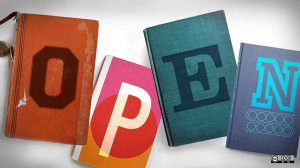 While David Wiley first used the term “open content” in 1998 (“History of the OER Movement,” 2021) and the term Open Educational Resource (OER) was first used in 2002 at UNESCO, the OER movement has grown in popularity in recent years. According to Creative Commons (n.d.), “Open Educational Resources (OER) are teaching, learning, and research materials that are either (a) in the public domain or (b) licensed[2] in a manner that provides everyone with free and perpetual permission to engage in the 5R activities[3]” (para. 2).
While David Wiley first used the term “open content” in 1998 (“History of the OER Movement,” 2021) and the term Open Educational Resource (OER) was first used in 2002 at UNESCO, the OER movement has grown in popularity in recent years. According to Creative Commons (n.d.), “Open Educational Resources (OER) are teaching, learning, and research materials that are either (a) in the public domain or (b) licensed[2] in a manner that provides everyone with free and perpetual permission to engage in the 5R activities[3]” (para. 2).
The 5R Activities of OER are to:
- Retain: make and control a copy of the resource
- Revise: edit/modify your copy of the resource
- Remix: create something new by combining your original/revised resource with other existing material
- Reuse: publicly use your original, revised, or remixed copy of the resource
- Redistribute: share copies of your original, revised, or remixed copy of the resource
Critical Lens: OER, Licensing, & Intellectual Property
There are several different types of licenses[4] when producing OER. Basically, different licenses set limits on how you have to attribute the original creator; how you are allowed to modify the original creation, if at all; and how you are allowed to share the original resource or remix you create (i.e., you might not be allowed to publish it commercially). As you learn more about OER and use it yourself, be aware of the license associated with each source and how it impacts your ethical use of that content.
A central tenet in this movement focuses on equitable access to educational materials, specifically access that is not prohibitive in cost. As textbook prices continue to rise, the OER movement recognizes that affordable (even free!) materials are necessary for students to succeed. Textbooks are not the only resources created as OER; others include open courseware, focusing on a more holistic educational experience beyond just the textbook; repositories of educational materials, where users can access OER and share or remix them; and other published materials, such as videos with Khan Academy.
Because of the interactive, digital nature of these resources, OER also allows materials to be timely, relevant, and current. Printed textbooks can take years to revise; this OER resource can be updated and re-published instantly to reflect the ever-changing nature of education.
The video below explains more about the importance of OER.
Applicable
Because this text is OER, it allows us to incorporate unique aspects that make this work applicable. First, the Creative Commons licensing of this text (CC BY-NC-SA) allows other users to adapt this text for their context, as long as the original authors are attributed (BY); the source is not used for commercial purposes, such as selling the work (NC or Non-Commercial); and subsequent adaptations also follow the same CC BY-NC-SA license (SA or Share Alike). Therefore, you can take out pieces that aren’t applicable to you and add others that are to provide a personalized learning experience for your own specific context. Secondly, the interactive nature of OER gives you chances to apply your learning to your own personal set of experiences. You’ll find more information about that in the “Key Features” section below.
Backward-Designed
Backward design (Wiggins & McTighe, 1998) is an instructional principle that you will learn more about in Chapter 6 that involves starting with the end goal of instruction in mind. It consists of 3 key elements:
- First, identify the desired results.
- Second, decide what evidence is needed that those results have been met.
- Third, plan instruction.
Following this logic, we have started with the vision of what a competent, successful educator in the 21st century needs to know and be able to do. We then designed this text to support you in acquiring those skills and dispositions. One key area that we notice is missing in traditional “Introduction to Education” texts is asking future educators to take a critical stance, which we’ll explore together now.
Critical
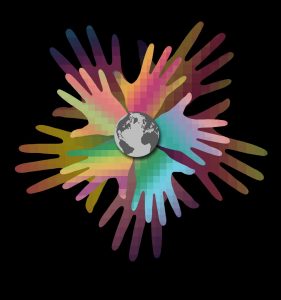
Sometimes the word “critical” can carry negative connotations, but critical theory goes much deeper than getting negative feedback in a critique of a project. The basic idea behind critical theory notes that there are issues of power, access, and equity in our society that privilege some people and oppress others. Critical theory strives “to create a world which satisfies the needs and powers” of all people (Horkheimer 1972, p. 246). To create such a world, we must constantly question and challenge the existing structures of power.
Education is no exception. While we often hear of or think of education and educators as apolitical, the reality is “there is no pedagogical experience that is not political in nature” (Freire & Macedo, 1987, p. 115). Schools are microcosms of society, meaning they often mirror inequitable power structures. Whose voices are featured in required reading lists and whose are silent? How does a “Muffins for Moms” family engagement event impact a student whose mom is not in their lives, or maybe who has two moms? If a school has a high proportion of English Learners but no correspondence is sent home in families’ home languages, what message does that send about whose language matters and whose doesn’t? Why are students of color over-represented in special education programs and school punishment statistics?
As educators, we have daily opportunities to create learning environments that are welcoming and reaffirming for our students’ varied backgrounds while also interrupting inequitable power structures. One way that we can practice critical theories in our classroom is to engage in culturally relevant teaching.
Culturally Relevant Teaching
If you close your eyes and envision your quintessential American classroom, odds are good that you’ll envision desks (most likely in rows) facing a teacher’s desk at the front of the classroom, situated in front of the board. What you’re envisioning might look a lot like this.
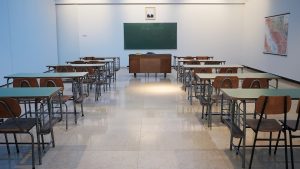
While some of our learning might have occurred in a space that looked somewhat like this, there are a lot of important components missing. The room is set up in a way that situates the teacher as the instiller of knowledge, and the students as receivers of the teacher’s knowledge. This a concept known as the banking model of education (Freire, 1970). Think of it like a piggy bank: the piggy bank is empty until it is filled up with coins. In this case, the students are the empty piggy banks, waiting to be filled with the knowledge (coins) deposited by the teacher. Furthermore, in the image above, the room is completely devoid of any sense of community. We see white walls and a map. Where are the students–their work, their passions?
Enter culturally relevant teaching (CRT). Gloria Ladson-Billings (1994/2009) originally created this concept in the 1990s. Instead of viewing students as empty piggy banks waiting to be filled with coins of knowledge, culturally responsive teaching recognizes that students bring a variety of experiences and knowledge with them to the classroom, and that these resources can be used to design classroom experiences that are relevant to the students’ cultures and experiences. Another way to look at culturally relevant teaching is to “teach to and through [students’] personal and cultural strengths, their intellectual capabilities, and their prior accomplishments” (Gay, 2010, p. 26).
Critical Lens: Variations on CRT
There are many different terms for this type of teaching: culturally responsive teaching (CRT), culturally relevant pedagogy (CRP), culturally sustaining pedagogy, culturally and linguistically relevant pedagogy, and more. While there are slight differences among these theories and approaches, the overall idea is the same: powerful learning occurs when we recognize the knowledge, backgrounds, languages, and experiences that our students bring with them to our classrooms and design instruction around these elements.
Ladson-Billings (1995, 2001) established three key pillars of culturally relevant teaching.
- Academic success: For teachers to embrace culturally responsive teaching, they have to believe that all students are capable of academic success. This belief involves setting high–but attainable–academic expectations for all students. Unfortunately, students who come from minoritized backgrounds (students of color, students from poverty, and more) sometimes are held to lower standards than their peers, which then becomes a self-fulfilling prophecy–those students don’t perform as well because of the lack of high academic expectations. However, high expectations aren’t helpful if they aren’t attainable. Just like you would not ask a couch potato to run a marathon tomorrow, you can’t ask a student to advance multiple years’ worth of academic skills–or even one year’s worth–without proper scaffolds and support.
- Cultural competence: Being a culturally competent teacher means you recognize that your own culture, worldview, and understanding does not necessarily reflect your students’. Being culturally competent is especially vital when we look at the demographics of today’s schools. Students are increasingly diverse, but the profile of teachers remains somewhat the same. In the United States, only 20% of teachers are not White (Geiger, 2018).
- Sociopolitical consciousness: Being a teacher with sociopolitical consciousness means you are willing to acknowledge and critique inequities. An inequity occurs when some people have certain benefits that others don’t have. For example, throughout the history of the United States, rules, laws, and social norms have given more power to people with certain characteristics–such as being White, male, heterosexual, and at least middle-class–than people with other characteristics, such as being a person of color, transgender, or poor. Some of these rules and norms have prevented groups of people from earning money, buying property, going to school, and more–all elements that affect a person’s ability to be successful for years and generations to come. Acknowledging and critiquing these inequities is an important part of culturally relevant teaching.
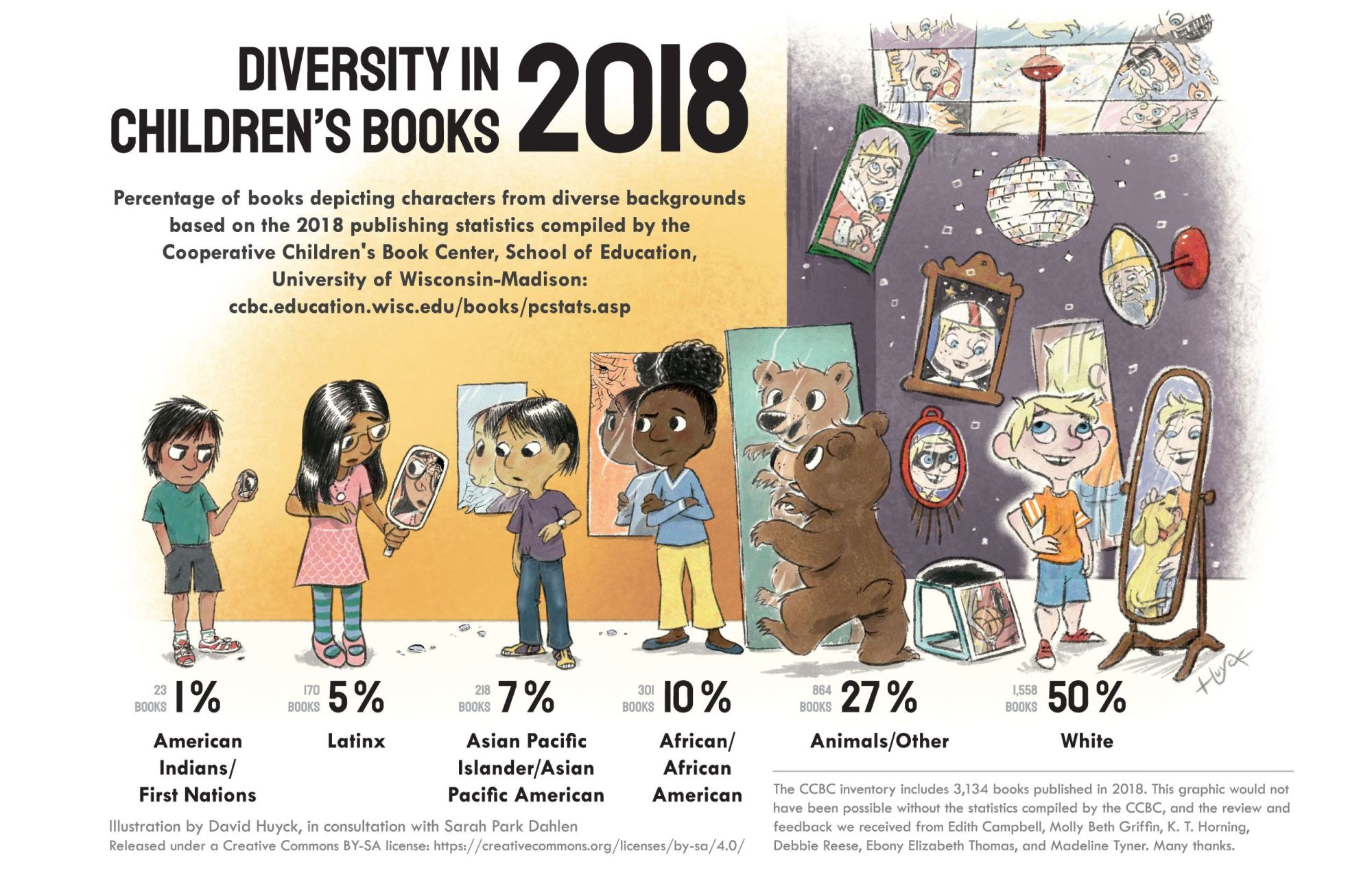
Beyond these three key pillars, there is no one “right way” to do culturally relevant teaching. You might make sure you have a classroom library full of books that reflect your students and worlds beyond your students’ own worlds (though this is an ongoing challenge!). You might make sure that your math problems have real-world applications and use names from your students’ families and friends. You might make sure that you are teaching multiple sides of history, instead of just the “winning side” (who, again, tends to be the people with more power, as explained above). There is no set curriculum that you must use to be a culturally relevant teacher. Instead, being a culturally relevant teacher involves aligning yourself with the three pillars above and knowing your students. In addition, a culturally responsive classroom has a feeling of community in the classroom. Everyone supports one other’s success in a culturally responsive classroom.
While the thought of culturally relevant teaching might be overwhelming right now, especially if you have not experienced this yourself as a learner, there are clear benefits from approaching your teaching this way. Gay (2010) described the potential of culturally responsive teaching as:
- validating,
- comprehensive,
- multidimensional,
- empowering,
- transformative, and
- emancipatory.
Looking back at the classroom pictured earlier in this chapter, you can see how such an environment would have a very hard time inspiring any of these characteristics!
To that end, we have a responsibility to look at some of our own privileges as authors of this text. We both identify as White women. Dr. Wells grew up in a middle-class household that put a lot of emphasis on success in school yielding future attendance at college. Dr. Clayton grew up in a family that also valued education, including the expectation of a college degree. While different pieces of our identities combine in different ways to make each of us the individuals that we are (we will talk more about this concept of intersectionality in Ch. 1), we both do benefit from certain privileges and positions of power. Sometimes this can make us overlook ways that we could be more culturally relevant teachers. The important thing to remember is that being a culturally relevant teacher is an ongoing process of learning and implementing instruction that builds off of our knowledge of our own students.
Stop & Investigate
If you’d like to learn more about culturally relevant teaching (CRT), here are some high-quality resources.
- Delpit, L. (2012). “Multiplication is for white people”: Raising expectations for other people’s children. The New Press.
- Gay, G. (2010). Culturally responsive teaching: Theory, research, and practice (2nd ed.). Teachers College Press.
- Howard, T. C. (2010). Why race and culture matter in schools: Closing the achievement gap in America’s classrooms. Teachers College Press.
- Ladson-Billings, G. (2009). The dreamkeepers: Successful teachers of African American children (2nd ed.). Jossey-Bass.
- Nieto, S. (2009). The light in their eyes: Creating multicultural learning communities. Teachers College Press.
- Paris, D., & Alim, H.S. (2017). Culturally sustaining practice: Teaching and learning for justice in a changing world. Teachers College Press.
How This Text is Organized
Being a teacher involves a balance of understanding information about teaching and actually applying that information into instruction. For this reason, this text is organized into two parts.
Part 1: Foundations of Education
Part 1 of this text will focus on the “nuts and bolts” of education–the basic theoretical, social, and historical constructs that underlie the teaching profession in the United States.
- Chapter 1, “The Teaching Profession,” explores practices of effective teachers, common professional competencies, and how individual teachers’ beliefs impact their classroom practice.
- Chapter 2, “Influences on Learning: Student Similarities and Differences,” digs into students’ unique learning strengths and needs against the backdrop of societal norms in the United States. Specific groups of students who have distinct learning needs, such as English Learners and students with disabilities, will be discussed, alongside theories of learning.
- Chapter 3, “Philosophical & Historical Foundations of American Education,” surveys key developments in education in the United States over the centuries, and also examines how various philosophies of teaching translate into classroom practice.
- Chapter 4, “Schools in America,” examines varying models of schools available in the United States while also explaining how schools are governed and financed.
- Chapter 5, “Ethical & Legal Issues in Education,” positions modern American education against the historical antecedents of landmark court cases, how legal systems impact schools and classrooms, and implications of ethical practice in today’s classrooms.
Part 2: Teaching in Action
- Chapter 6, “Curriculum: Planning, Assessment, & Instruction,” provides an introduction to the process behind preparing for and implementing instruction, including types of curriculum and considerations for planning, instructional delivery, and assessment.
- Chapter 7, “Classroom Environment,” encapsulates the best practices behind structuring an organized classroom learning environment that supports all learners. Community-building strategies, trauma-informed practice, meeting the needs of the whole child (including social and emotional learning), and community partnerships–especially with families–are featured.
- Chapter 8, “And Now What? The Path Forward,” considers what it means to be a professional teacher amidst current events, trends, and changes in the evolving profession of education.
Key Features
Each chapter will feature similar structures to guide your learning, such as the following.
- Unlearning: Aligning with our critical framework that causes us to question and challenge knowledge that is taken for granted, we will open each chapter with a common misunderstanding related to the topic of that chapter.
- Multimodal content: As 21st century learners, we take in information from a variety of “texts,” not just printed words. Therefore, we will incorporate videos, websites, podcasts, and more throughout the book to keep you engaged with the content in current and innovative ways.
- Interactive components: Being an effective teacher means that you have a solid knowledge of issues related to teaching, but you are also able to apply that knowledge to real-world situations. Interactive components throughout the text that will invite you to stop and apply your learning to your own contexts as a future educator include prompts for you to pause and ponder and opportunities to stop and investigate to deepen your understanding of a topic. Note that users of the downloaded PDF can access interactive components that are not preserved in the PDF version of this text in Appendix A.
- Critical Lens Boxes: Critical theory challenges us to stop and question power structures and inequity, including in educational contexts. Each chapter features Critical Lens Boxes to push your thinking about equity from multiple perspectives, often tied to current events and real-world application.
Who We Are
Before we get started, though, allow us to introduce ourselves. First and foremost, we are both teachers! Even though we are now both teacher educators who get to work with the newest future teachers, we both spent time teaching in K-12 schools before moving into higher education.
Dr. Melissa Wells
I spent the first eight years of my career teaching in the South Carolina public schools as a third grade teacher, a kindergarten teacher, and an elementary literacy coach. All of my positions served Title 1 schools, which we will talk more about later in this book, but these are schools typically situated in less-affluent communities.
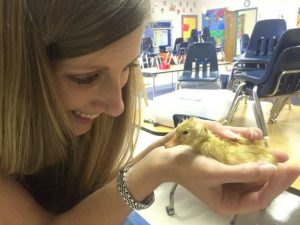
When I was in fifth grade, I helped a kindergarten class at lunch, and this experience helped me decide that I wanted to become a teacher one day. While opening milk and mustard packets (trust me, they are so much worse than ketchup packets) were some of my early responsibilities as a lunchroom volunteer, I also got to visit the class during other parts of the day, such as instruction and recess. I met one little girl in the class named Aubrey[5]. Aubrey stood out to me early on because she was one of the only students who could tell me apart from my twin sister (who also helped with the kindergarten class), her love of giving the tightest hugs, and her unique communication techniques (I figured out one day that she stuck out her tongue just a little to request that her hot dog be cut into tiny pieces, and she stuck out her tongue more if she wanted her hot dog in larger, but still anti-choking-sized, pieces). Aubrey also happened to have Down Syndrome. While this meant that Aubrey had some special learning needs, I was able to work with her teachers to see so many of the things Aubrey was capable of instead of just what she wasn’t. I knew then I wanted to be a teacher who saw possibilities, who focused on what students do bring with them instead of what they don’t.
Dr. Courtney Clayton
Being an educator was not my goal when I graduated from college. I majored in French Literature in college. I studied what I was passionate about, but when it came time to graduate, I realized I was in the minority of students at my school: most of them wanted careers in business, law, or medicine. I knew med school was out–too much blood; went to one interview in a suit for a large business firm–nope. When I really started to consider applying to law school, I realized that wasn’t for me either. I decided to go a different direction and ended up in something that piqued my interest: video, film and commercial production. I worked in this industry for many years, becoming increasingly disillusioned, until one day I remember distinctly that I was on a commercial shoot for eyeglasses. The director was yelling at the producer, my boss, saying that she couldn’t get anything right, and I stood there thinking, “Seriously, this is what I am doing with my life?” I went home that night and considered what else I might want to do for a living.
I thought back to when I was in elementary school and how much I loved my teachers; how school was a safe haven for me from my own family’s struggles; how much I loved reading and learning new things. That was it–I wanted to try teaching. Before I jumped head-first into a teaching licensure program, I wanted to see about getting my feet wet first. I applied and was hired for a position as an assistant teacher at a school for boys that serviced a residential treatment facility. All of the students in the facility had been removed from their families due to significant emotional and physical trauma. The work was tough, but I loved it. I loved working with young people. Even in this very traumatic setting, the students needed their teachers and looked to them for instruction and guidance.
I went on to get my teaching license in K-6 education with a CLAD (Crosscultural, Language, and Academic Development) certificate and Master’s degree in Education. The CLAD certificate was something that California had started requiring in the mid to late 1990s (when I was doing my certification) to be qualified to teach the linguistically and culturally diverse student population we were to encounter in schools, including English Learners. Though nothing can completely prepare a White, suburban-raised woman for the rich diversity of schools, I did study topics like applied linguistics, second language acquisition, and multicultural education at a time when most colleges of education had not begun to consider the importance of these issues and topics.
After teaching in California for several years, I moved to Boston. I taught at an independent school first since my teaching license did not transfer (we will discuss license reciprocity more in Chapter 1), and then got hired at the International School of Boston, which ran a dual language program in French and English. I was trained as an ESL specialist and taught 2nd grade. As a teacher there, combined with my experience in California schools, I became more and more interested in students whose first language was not English, and more importantly, the best ways to instruct them. I decided to pursue my PhD, and my dissertation focused on what made an effective teacher of English Learners in full classroom settings, not as ESL teachers. Since that time, I have worked in supporting preservice teachers to learn about how best to work with our English Learners in schools, particularly in the area of using culturally and linguistically responsive teaching.
Pause & Ponder
Who are you? What brings you here to explore the profession of teaching? How might your experiences and who you are impact the educator you may one day become?
Conclusion
Now that you have a feel for how this text is organized and what frameworks underlie it, we are ready to explore the Foundations of American Education. Whether you are choosing to become a teacher or just want to learn more about the field of education, you are making an important step to be an advocate and informed stakeholder of education by engaging in this text. Congratulations, and welcome to the world of teaching!
- True story. Dr. Wells had not one, but two, harrowing crayfish escapes during her first year teaching. She held a funeral as a cross-curricular integration activity to honor the life cycle of the crayfish (science) while also studying the genre of eulogies (English). To this day, she can no longer eat crayfish. ↵
- https://creativecommons.org/licenses/ ↵
- https://opencontent.org/definition/ ↵
- https://creativecommons.org/licenses/ ↵
- As teachers, we have to protect our students’ privacy, so we will use pseudonyms throughout this book. ↵
Teaching, learning, and research materials that are either (a) in the public domain or (b) licensed in a manner that provides everyone with free and perpetual permission to retain, revise, remix, reuse, or redistribute those resources.
Planning concept designed by Wiggins & McTighe (1998) that involves identifying desired results and then working backward to design assessment and instruction.
Approach of constructing meaning through recognizing issues of power, access, and equity; often involves questioning and challenging the status quo.
Student-centered approach to teaching created by Ladson-Billings (1994/2009) with three key pillars: academic success, cultural competence, and sociopolitical consciousness.
Term coined by Crenshaw (1989) meaning many different aspects of identity--including race, economic class, gender, and more--overlap and intersect with one another.
Part of the Elementary and Secondary Education Act that provides financial assistance to educational agencies and schools with high proportions of students from low-income backgrounds.
Agreements among different states to honor teaching licenses earned in other states, sometimes with additional requirements added (like testing).

